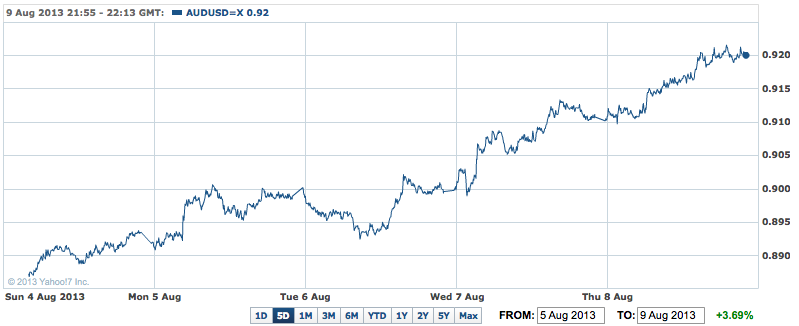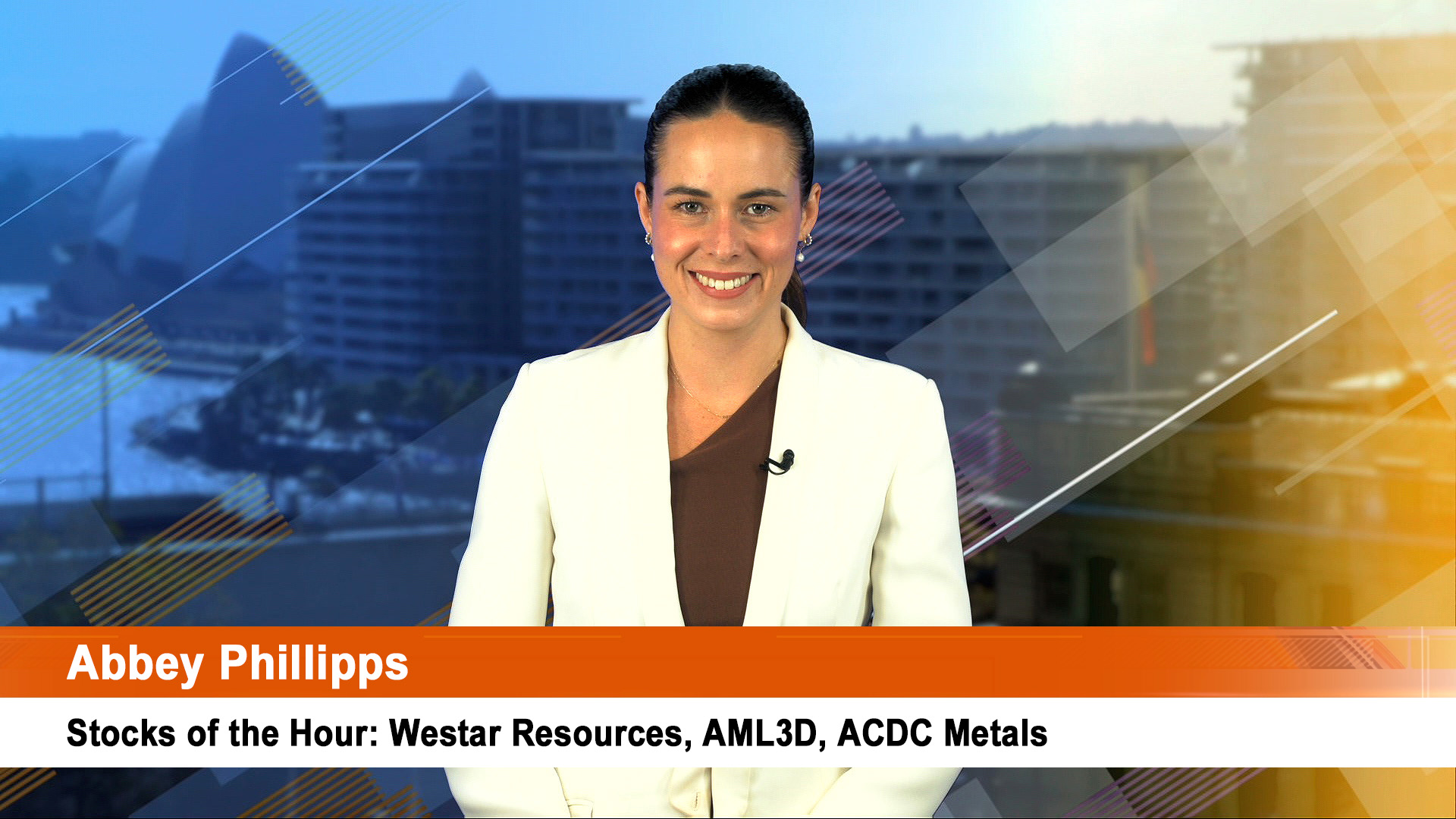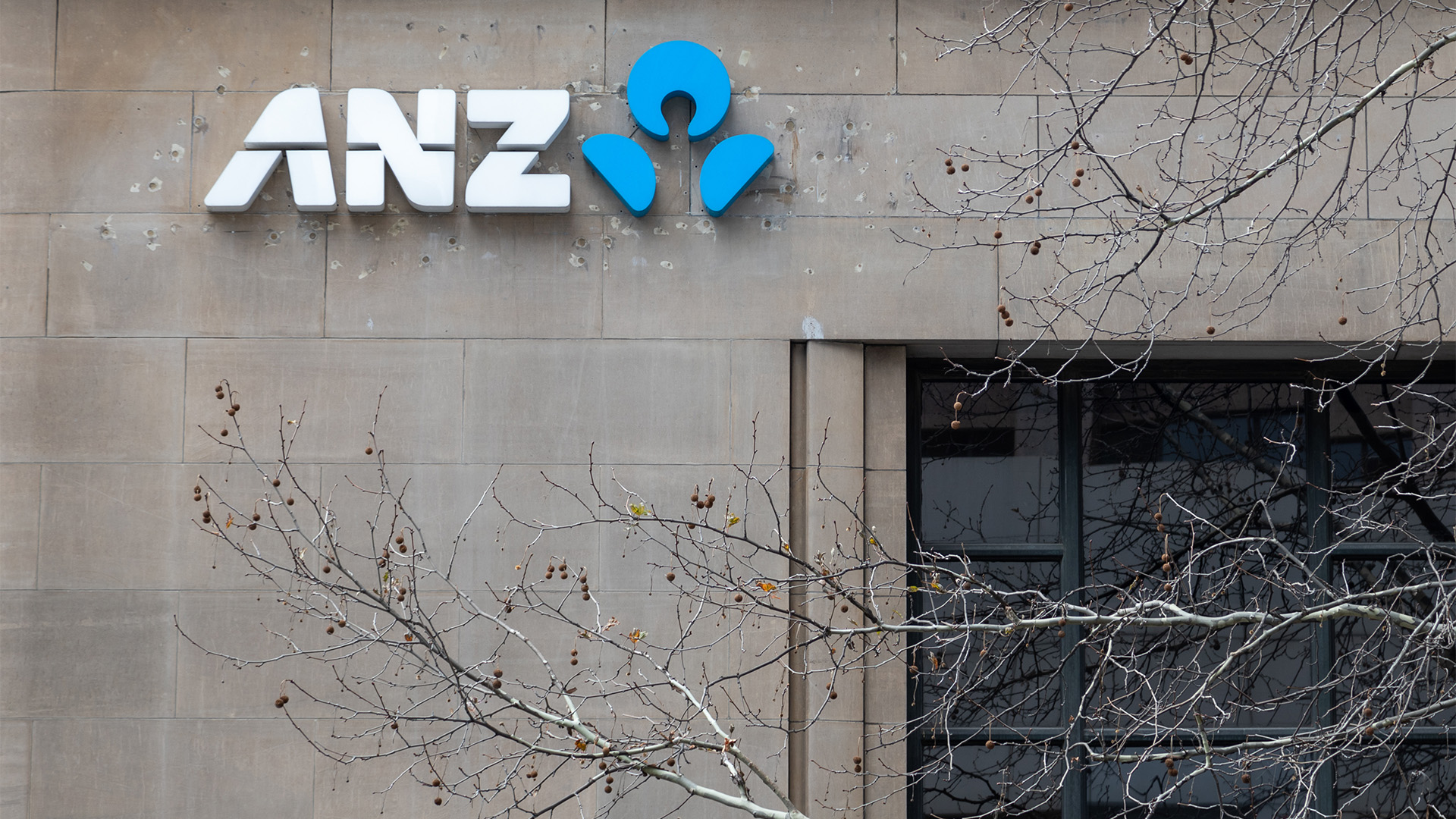Despite new concerns offshore about the ending of the US Federal Reserve’s easing program damaging market confidence and sending interest rates higher, the Australian dollar had its best week for two months last week.
In fact, the dollar’s gains came as the Reserve Bank left us with the strongest impression yet that it wants the currency to fall further.
However the currency ignored that commentary, rising 3.3% over the week to close at 92.06 USc, and more than 4% above last week’s low of 88.48 USc hit a week ago.
Those gains offset the losses the week before after RBA Governor, Glenn Stevens hinted that the central bank was moving to cut rates, which it did.
The gains last week brought the fall in the currency’s value back to 11 – 12%, against the 15% of last Monday and Tuesday, when the RBA cut the cash rate to 2.5%.
That’s not enough for the RBA which would like to see the dollar very much lower to provide a bigger stimulus to the economy – as it explained in its monetary policy report on Friday.
Every 10% fall in the currency could push growth up by a half to 1% over the following two years. An 80 USc dollar is clearly better than one around 90 USc or higher.
AUDUSD 5D – Aussie Dollar’s Surprise Rebound Will Worry RBA

Helping the dollar was the better than expected July economic data from China and the way the Reserve Bank seemed to remove its so-called easing bias from the post board meeting statement last Tuesday, offset by a forecast of further weakness in the economy into 2014.
The currency is still being driven by the view about China offshore, rather than a hard-headed assessment about the weakening outlook for the Australian economy, as seen in Friday’s release of the Reserve Bank’s third Monetary Policy Statement for the year.
China said on Friday that its factory output rose 9.7% last month, higher than forecasts, while retail sales rose 13.2%, inflation was steady and producer prices again fell.
The "improvement” in China could help push the dollar to 93 USc this week, according to analysts, but it could also fall back to 90 USc, such is the volatility around the currency and the outlook for our economy.
In Friday’s statement, the central bank made it very clear that it wants the currency to continue falling and believes it should be much lower when it highlighted the confused outlook for the resources investment boom and the wider economy.
The bank again warned that the mining investment boom could fall away faster than anticipated, while it was still very uncertain about how the non-mining sectors will take over and help to "rebalance" the economy.
The Reserve Bank said its forecast for economic growth was based on the expectation that non-mining sectors would fill the gap left by the decline in mining investment, but it added that, "The forecast for mining investment remains uncertain, reflecting the timing of investment work on large projects and the possibility of cost overruns".
"The outlook for the domestic economy is a little weaker in the near term than it was in the May Statement," the RBA said.
"This reflects the recent run of data on domestic demand and a lowering of the forecast profile for mining investment over the next few years. At the same time, however, the recent exchange rate depreciation is expected to add to activity in trade-exposed sectors over the next two years or so.
"The combination of these different influences means that GDP growth is now expected to remain below trend through to around the middle of next year, before picking up to be above trend in 2015.
"Mining investment is expected to decline more noticeably towards the end of the forecast period as the large projects in liquefied natural gas reach completion. However, in time other sources of demand are likely to contribute more to growth.
"Employment growth is expected to be only modest over the next few quarters, consistent with the below-trend growth of the economy. This will see the unemployment rate increase gradually for a year or so. Subsequently, as growth moves closer to trend and eventually above trend, employment growth should pick up, and the unemployment rate should level out and then start to decline.
"GDP growth is expected to remain a little below trend at close to 21⁄2 per cent through to mid 2014, before picking up to above-trend growth by the end of the forecast horizon as the global economy experiences above-trend growth and the stimulatory effects of the recent exchange rate depreciation and current low level of interest rates lead to an improvement in business conditions and so investment.
"In the near term, the outlook is a little weaker than that presented in the May Statement, but at the aggregate level it is little changed over 2014.
"The softer outlook over the next few quarters reflects the somewhat weaker data received since May, for household consumption and business investment in particular. The depreciation since May is expected to bolster growth, working to boost activity in the trade-exposed sector. At the same time though, the profile for mining investment has been revised down," the central bank said.
Clearly from what the RBA says, a weaker currency is central to the ability of the economy to make that transition.
The RBA said a further fall in the value of the dollar would help to assist with the required rebalancing of growth in the domestic economy.
A 10 per cent depreciation of the exchange rate could stimulate growth by half to one-per cent over two years or so, according to the RBA’s estimates.
"Further depreciation of a similar magnitude to that already experienced to date could, for example, deliver above-trend growth sooner than currently forecast."
But if China’s economy is stabilising and not tanking as many offshore alarmists have claimed, the chances will decrease of Australia getting a sustained fall in the currency below 90 US cents, which is not what the RBÅ wants to see.













